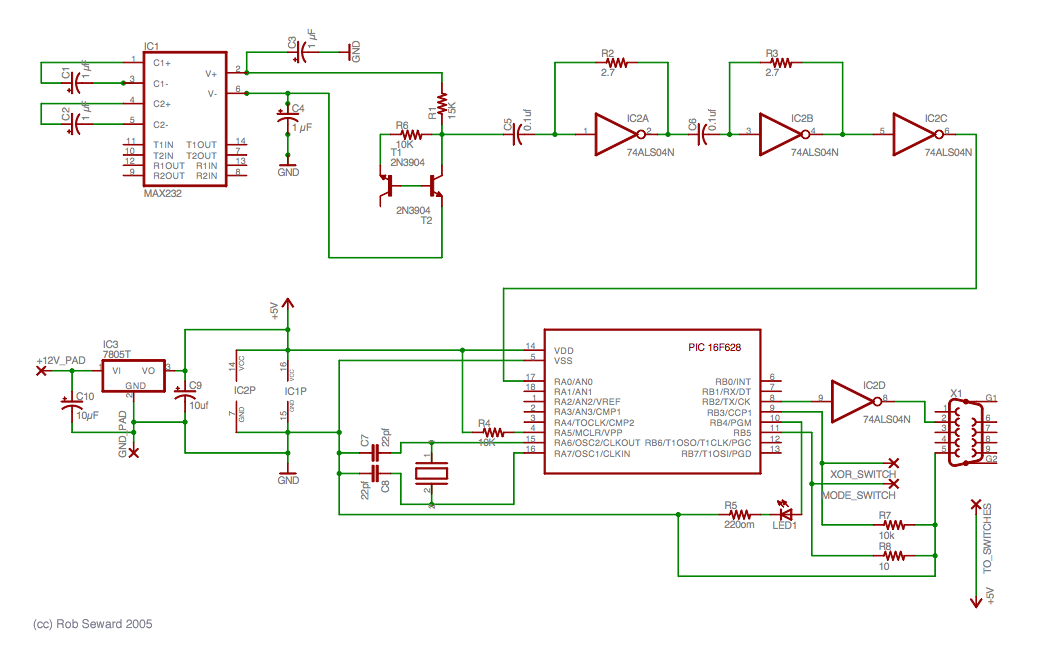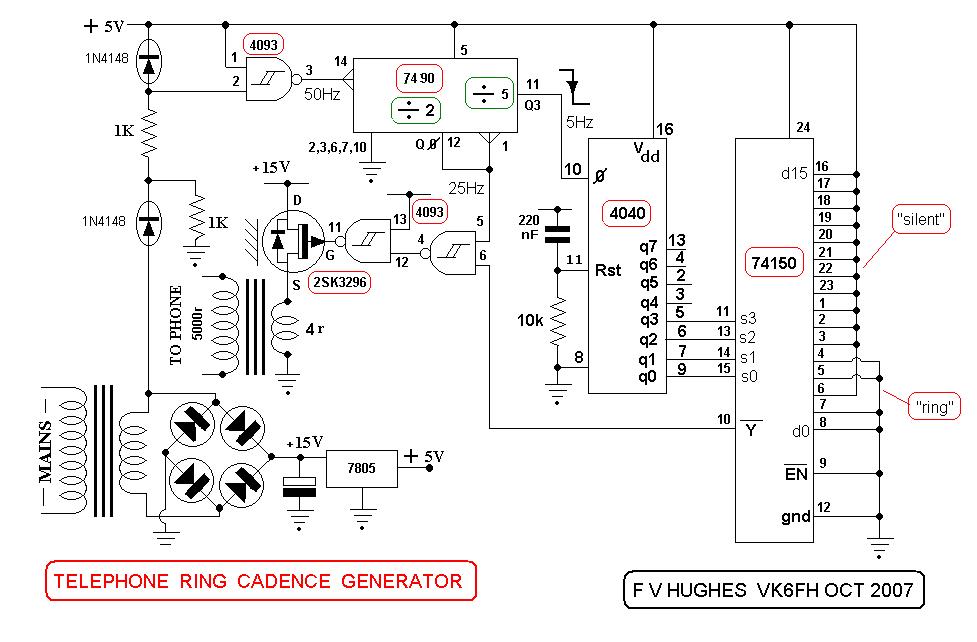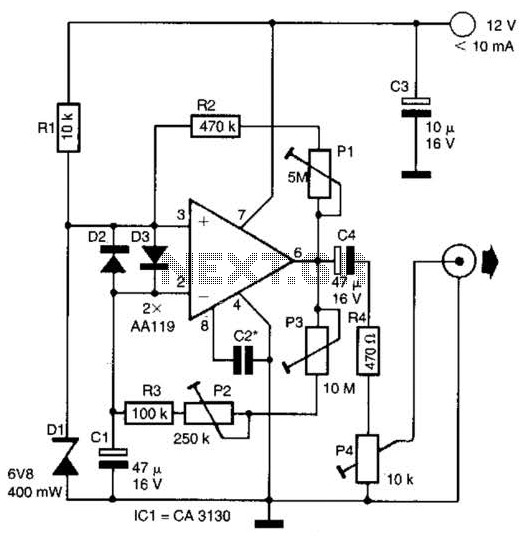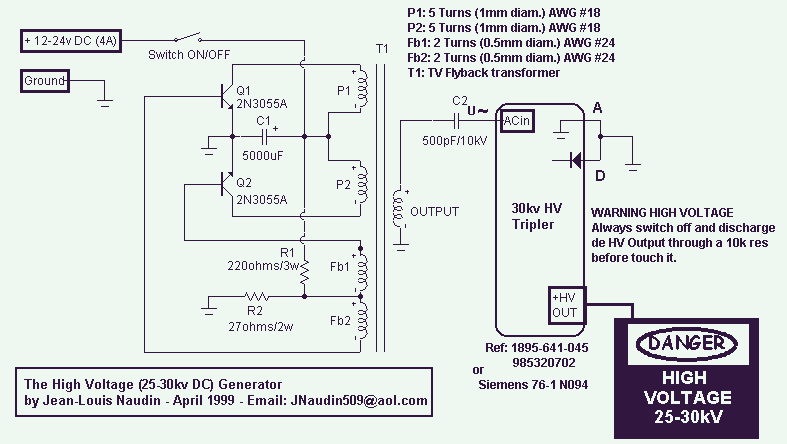
Run-Down Clock/Sound Generator
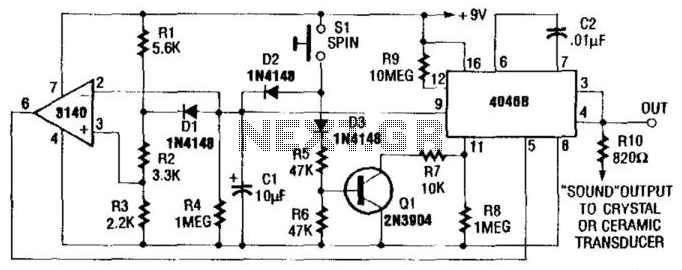
Used in electronic roulette or dice games, this circuit produces a clock signal that initially is several tens of kHz (depending on C2) and gradually decreases to zero in about 15 seconds, as C1 discharges through R4.
The described circuit is a timing generator designed for applications in electronic roulette or dice games. It functions by generating a clock signal, which begins at a frequency in the range of several tens of kilohertz, contingent upon the capacitance value of capacitor C2. As the circuit operates, the clock frequency diminishes over a period of approximately 15 seconds. This gradual decrease in frequency is achieved through the discharge of capacitor C1 via resistor R4.
In terms of the circuit's operation, the clock signal is generated by a relaxation oscillator or a similar timing mechanism. The initial high frequency is determined by the charge and discharge characteristics of the capacitors involved, where C2 plays a pivotal role in establishing the starting frequency. As C1 discharges through R4, the voltage across it decreases, leading to a reduction in the clock signal frequency. This behavior can be utilized to create a suspenseful effect in games, where players anticipate the outcome as the frequency slows down.
Key components of the circuit include:
- C1: A capacitor that discharges over time, influencing the frequency of the clock signal.
- C2: A capacitor that sets the initial frequency of the oscillator.
- R4: A resistor that controls the discharge rate of C1, thereby affecting the time constant and the duration of the frequency decrease.
The design can be further enhanced by incorporating additional components such as transistors or logic gates to buffer the output signal, ensuring that it can drive other components in the game circuitry without significant signal degradation. Additionally, tuning elements such as variable resistors could be introduced to allow for adjustments in the timing characteristics, providing flexibility in game design. Overall, this circuit exemplifies a simple yet effective approach to generating a dynamic clock signal for interactive gaming applications. Used in electronic roulette or dice games, this circuit produces a clock signal that initially is several te ns of kHz (depending on C2) and gradually decreases to zero in about 15 seconds, as CI discharges through R4.
The described circuit is a timing generator designed for applications in electronic roulette or dice games. It functions by generating a clock signal, which begins at a frequency in the range of several tens of kilohertz, contingent upon the capacitance value of capacitor C2. As the circuit operates, the clock frequency diminishes over a period of approximately 15 seconds. This gradual decrease in frequency is achieved through the discharge of capacitor C1 via resistor R4.
In terms of the circuit's operation, the clock signal is generated by a relaxation oscillator or a similar timing mechanism. The initial high frequency is determined by the charge and discharge characteristics of the capacitors involved, where C2 plays a pivotal role in establishing the starting frequency. As C1 discharges through R4, the voltage across it decreases, leading to a reduction in the clock signal frequency. This behavior can be utilized to create a suspenseful effect in games, where players anticipate the outcome as the frequency slows down.
Key components of the circuit include:
- C1: A capacitor that discharges over time, influencing the frequency of the clock signal.
- C2: A capacitor that sets the initial frequency of the oscillator.
- R4: A resistor that controls the discharge rate of C1, thereby affecting the time constant and the duration of the frequency decrease.
The design can be further enhanced by incorporating additional components such as transistors or logic gates to buffer the output signal, ensuring that it can drive other components in the game circuitry without significant signal degradation. Additionally, tuning elements such as variable resistors could be introduced to allow for adjustments in the timing characteristics, providing flexibility in game design. Overall, this circuit exemplifies a simple yet effective approach to generating a dynamic clock signal for interactive gaming applications. Used in electronic roulette or dice games, this circuit produces a clock signal that initially is several te ns of kHz (depending on C2) and gradually decreases to zero in about 15 seconds, as CI discharges through R4.
